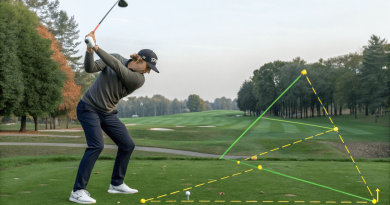What is a Golf Ball Retriever?
Golf is a sport that can be both fun and relaxing, and who doesn’t love chasing a little white ball up and down a fairway? Whether you swipe the ball into a pond, a bush, or just over a fence, retrieving it can be tricky. That is where a golf ball retriever comes in handy. But what is a Golf Ball Retriever? Let’s dive in and find out.
What We Cover In this Post
Understanding the Golf Ball Retriever
A golf ball retriever is used by some golfers to assist in retrieving golf balls from water hazards or rough. Consider water hazards, high grass, shrubbery, or anywhere you don’t want to stoop over or take a chance on stepping. Rather than putting your shoes, clothes or yourself at risk, a retriever can help you get the ball back fast and safely.
Also Read: Was John Daly a good golfer?
Parts of a Golf Ball Retriever
Here are some of the basic components of most golf ball retrievers:
- Telescopic Pole – This is the retriever’s stick. It has a long reach to get to distant balls. A few of them go out 12 feet or more!
- Ball Holder/Scoop – This is the component at the bottom of the pole that holds the ball. Usually a small cup, basket, or clamp that keeps the ball in place.
- Handle or Grip – this is where you grasp the retriever. Many handles are constructed from rubber or foam for a solid and comfortable grip.
“A good grip is key to having a good throw,” she says, and these parts make it easy to grab a ball without having to bend down to the ground, stretch too much, or get wet.
The Benefits of Golf Ball Retrievers
You see the ball and think, “I can walk to the ball and pick it up.” Many such claims are true, but not all of them. Here are a few reasons golfers love retrievers:
- Saves Time – You don’t have to wander around the course looking for lost balls.
- Helps Keep You Dry – You can never predict when the next ball is going to end up in a water hazard or down into the mud. A retriever saves your shoes and clothes.
- Avoid Injury – Bending over, reaching, or straining can leave your back aching. Retrievers reduce strain.
- Protect the Ball – Golf balls can be costly. A retriever prevents you from damaging your ball while bringing it to the surface.
Also Read: How Much Does a Golf Course Membership Cost?
Types of Golf Ball Retrievers
Not all retrievers are created equal. Here are some common types:
- Pullout Retrievers – These can also be rolled up and down for simple portability. Perfect for most golfers.
- Net Retrievers – Retrievers have a net at the end to scoop balls out of the water. Very handy for ponds.
- Clamp or Basket Retrievers – These types keep the ball in place and work well in tight areas such as bushes or high grass.
- Easy Transport and Strong Aluminum Retriever – These retrievers are lightweight and easy to manage, strong and won’t show signs of rust, particularly if you play near water.
The type of ball you should get is determined based on the regular golf course environment and the distance you can reach.
How to Use a Golf Ball Retriever.
The retriever is relatively easy to use:
- Extend the Pole – Open it to a comfortable length to reach the ball.
- Position the Scoop or Net – Set the end right on the ball.
- Get the Ball — Push gently if it is a basket or clamp retriever, and lift it up.
- Press the Pole – Folds down to fit in your golf bag.
It can take a few tries to get the hang of it, but once you do, it’s second nature.
How to Choose a Golf Ball Retriever
When looking for one, keep these tips in mind:
- Length – Ensure that it’s long enough to cover you for a standard golf course scenario.
- Weight – A retriever that doesn’t weigh you down is more comfortable, especially if you play 18.
- Durability – Materials such as aluminum or stainless steel stand the test of time.
- Convenience – Pair it up in a few seconds with easy grab handles, and it’s a wonder at just how simple things can be.
Also Read: How Often Should Golf Clubs Be Regripped?
So, what is a golf ball retriever? It’s an easy but indispensable addition to a golfer’s repertoire, that saves time, protects the balls, and relieves strain. And whether you are a novice or a pro, a retriever can help improve your game and make it more enjoyable, with less stress.



